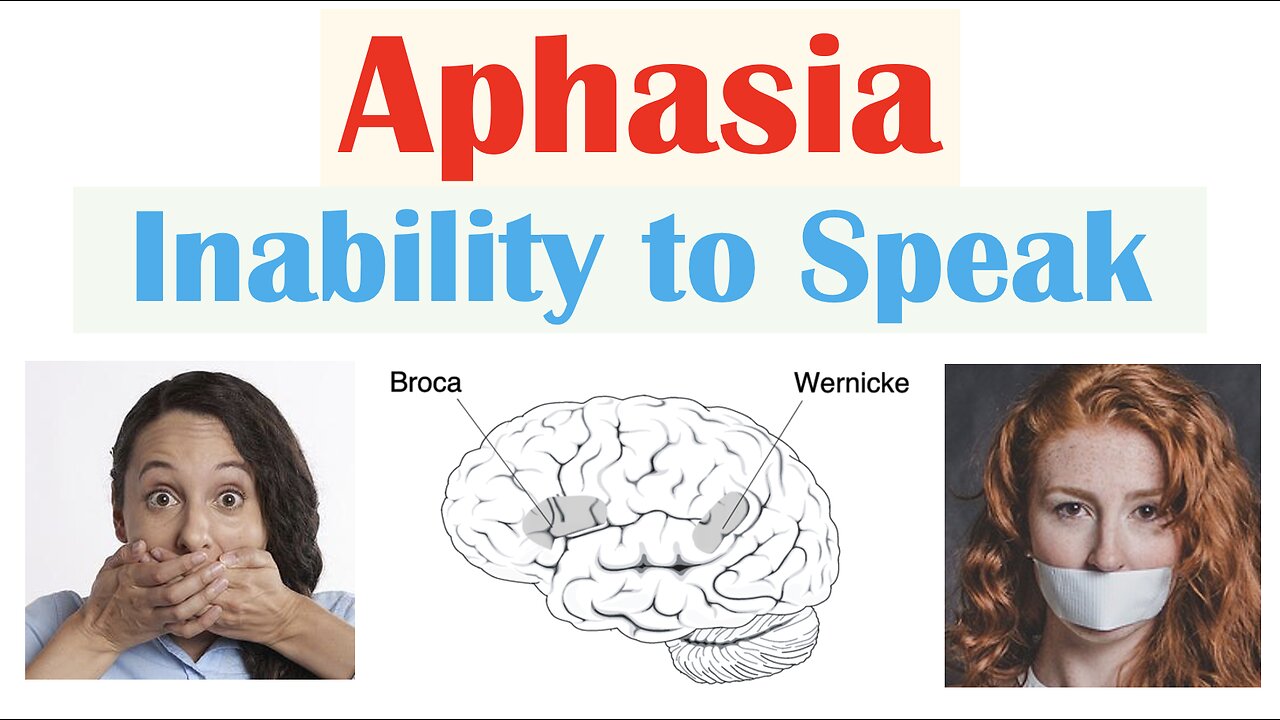Premium Only Content

Aphasia | Types (Broca’s, Wernicke’s, Global), Causes, Signs & Symptoms, Diagnosis, Treatment
Aphasia | Types (Broca’s, Wernicke’s, Global), Causes, Signs & Symptoms, Diagnosis, Treatment
Aphasia is an acquired cognitive condition involving a reduction, disruption or loss of ability to communicate (including speaking and understanding language). There are important language centers located in the brain, and these include Broca’s area, Wernicke’s area, the arcuate fasciculus and the angular gyrus. Damage or injury to these language centers can lead to a variety of different types of aphasia, including Nonfluent aphasia (Broca’s aphasia), Fluent aphasia (Wernicke’s aphasia), Global aphasia, Conduction aphasia, Transcortical aphasia and Anomic Aphasia. In this lesson, we discuss the brain anatomy and location of language centers in the brain, what causes injury or damage to these language centers, and we look at the signs and symptoms that occur with each type of aphasia.
I hope you find this lesson helpful. If you do, please like and subscribe for more lessons like this one!
JJ
**MEDICAL LEGAL DISCLAIMER**: JJ Medicine does not provide medical advice, and the information available on this channel does not offer a diagnosis or advice regarding treatment. Information presented in these lessons is for educational purposes ONLY, and information presented here is not to be used as an alternative to a healthcare professional’s diagnosis and treatment of any person/animal. Only a physician or other licensed healthcare professional are able to determine the requirement for medical assistance to be given to a patient. Please seek the advice of your physician or other licensed healthcare provider if you have any questions regarding a medical condition.
-
 4:31
4:31
CoachTY
16 hours ago $12.14 earnedCOINBASE AND DESCI !!!!
52K6 -
 10:02
10:02
MichaelBisping
15 hours agoBISPING: "Was FURY ROBBED?!" | Oleksandr Usyk vs Tyson Fury 2 INSTANT REACTION
7.27K7 -
 8:08
8:08
Guns & Gadgets 2nd Amendment News
2 days ago16 States Join Forces To Sue Firearm Manufacturers Out of Business - 1st Target = GLOCK
59.5K60 -
 10:17
10:17
Dermatologist Dr. Dustin Portela
1 day ago $10.07 earnedOlay Cleansing Melts: Dermatologist's Honest Review
69.8K5 -
 1:02:20
1:02:20
Trumpet Daily
2 days ago $31.29 earnedObama’s Fake World Comes Crashing Down - Trumpet Daily | Dec. 20, 2024
45.1K40 -
 6:29
6:29
BIG NEM
23 hours agoCultivating God Mode: Ancient Taoist NoFap Practices
36.9K9 -
 30:53
30:53
Uncommon Sense In Current Times
2 days ago $8.86 earned"Pardon or Peril? How Biden’s Clemency Actions Could Backfire"
61.6K4 -
 40:01
40:01
CarlCrusher
21 hours agoSkinwalker Encounters in the Haunted Canyons of Magic Mesa - ep 4
57.6K2 -
 59:44
59:44
PMG
1 day ago $6.77 earned"BETRAYAL - Johnson's New Spending Bill EXPANDS COVID Plandemic Powers"
58.7K25 -
 6:48:50
6:48:50
Akademiks
19 hours agoKendrick Lamar and SZA disses Drake and BIG AK? HOLD UP! Diddy, Durk, JayZ update. Travis Hunter RUN
180K33